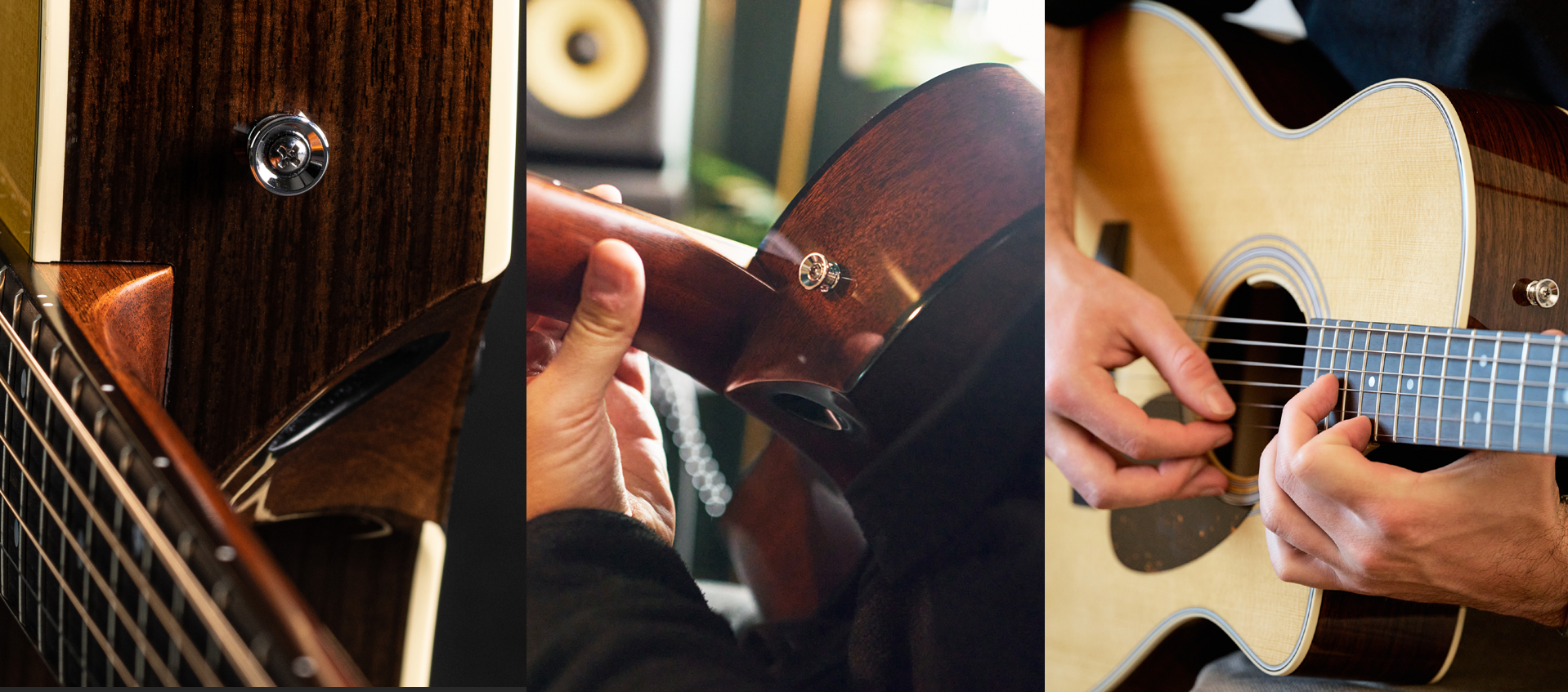Martin SC-28E and SC-18E arrive at NAMM 2024
Standard Series rosewood and mahogany axes of the future with classic styling
SC-28E and SC-18 E specs include: 13-fret asymmetrical S body size with deep scoop cutaway; high gloss nitrocellulose finish; solid spruce top with patented internal soundboard recurve; spruce Tone Tension X-bracing with proprietary shaping; heel-less solid hardwood neck with satin finish, Sure Align neck joint system and ergonomic Low Profile Velocity shaping, solid ebony fingerboard with High Performance Taper; solid ebony belly bridge with 1930 profile but smooth contour surface; 2-5/32” string spacing; faux tortoise asymmetrical teardrop pickguard; nickel open-back tuning machines; revised Fishman Aura VT Blend electronics with Aura HD imaging or L.R. Baggs Anthem electronics. Comes with a molded hard-shell case with plush lining.
“I was surprised by these acoustic-electric hybrids, in how a chord strummed on the SC-28E sounds more like a 000-28 or OM-28 than it didn’t, only with that slightly more-pronounced bottom E string. But I was most pleasantly surprised by the classic Martin undertone presence in the low-mids of the SC-18E and the acoustic tone during fingerstyle picking patterns and playing lead accompaniment to another person’s strumming and singing, both when acoustic and amplified.”
Newness Never Looked So Timeless
The Martin SC-28E and SC-18E are made in Martin’s revolutionary S body size with a Cutaway, in traditional Styles 28 and 18, and come with onboard Electronics. Unlike the previous SC models from the Martin factory in Navojoa, Mexico, the SC-28E and its sibling the SC-18E are made at Martin’s home facility in Nazareth, PA and are the latest members in the venerable Standard Series that sets the world-wide standard for professional-level acoustic guitars. They have a long-scale neck that feels more like a short-scale neck by virtue of being 13-fret guitars with an asymmetrical body.
The SC-28E has the same aesthetic styling and Indian rosewood back and sides as the venerable D-28. With Antique White body binding and black and white ply purfling framing the vintage toner of the spruce top, this futuristic SC-28E would have fit right in at Woodstock or a 1950s folk-scene hootenanny. But given the SC-28E’s prowess when plugged-in, it would have likely been at home in the hands of Carlos Santana as it would Joan Baez.
The SC-18E has the same mahogany back and sides and the same styling as a D-18 from 1937, with faux tortoise shell bindings and Old Style 18 sound hole rosette. The noticeable cosmetic difference being the abalone fret position markers that tend to give off more color than the white mother-of-pearl used on prewar Martins.
Frankly, from the days of the SC prototypes, the only solid-wood SCs I have played were made of rosewood, so I was especially looking forward to the SC-18E’s debut. I was very happy with the results.
Previous SCs were made at Martin’s plant in Navojoa, Mexico with bodies that feature Road Series-level construction. But it was always Martin’s intention to release an SC-18E and SC-28E, and now they have.
Upscale Hybrid
Both models employ the same internal construction as the ornately decorated limited-edition Custom Shop SC-2020, the very first S model made built at Martin’s home factory in Nazareth, PA with all-solid tonewoods. The soundboard and electronics having been tweaked to get the most out of the solid tonewoods and help avoid feedback issues when plugged in and amplified at high volumes.
This is particularly important because the Martin S models are not just acoustic guitars with onboard electronics. They are true acoustic-electric hybrid musical instruments designed from the ground up to have the playability of an electric guitar and the capability to be played through the exact same gear chain, so a concert performer can unplug their Les Paul or Stratocaster and plug in their Martin SC model without missing a beat.
But it is the acoustic tone that will inspire guitarists to pay the higher prices required to own a Standard Series SC model rather than the Road Series SC-13E, SC-13E Special, or SC-10E. The SC-28E and SC-18E do cost significantly more, but not as much as the CS SC-2020.
Martin Acoustic Tone
From the first strum, both of these new models sound noticeably fuller and more resonate with greater harmonic complexity than their Road Series counterparts. As one might expect from a Standard Series guitars made of rosewood and mahogany, the tone of the SC-18E has nicely defined fundamental notes supported by a woody warmth that rounds out the bottom end very much like the other 18s, but with a surprisingly plump note from the bottom E, at least when heard on a recording taken through a quality microphone.
(click photos to enlarge)
 |
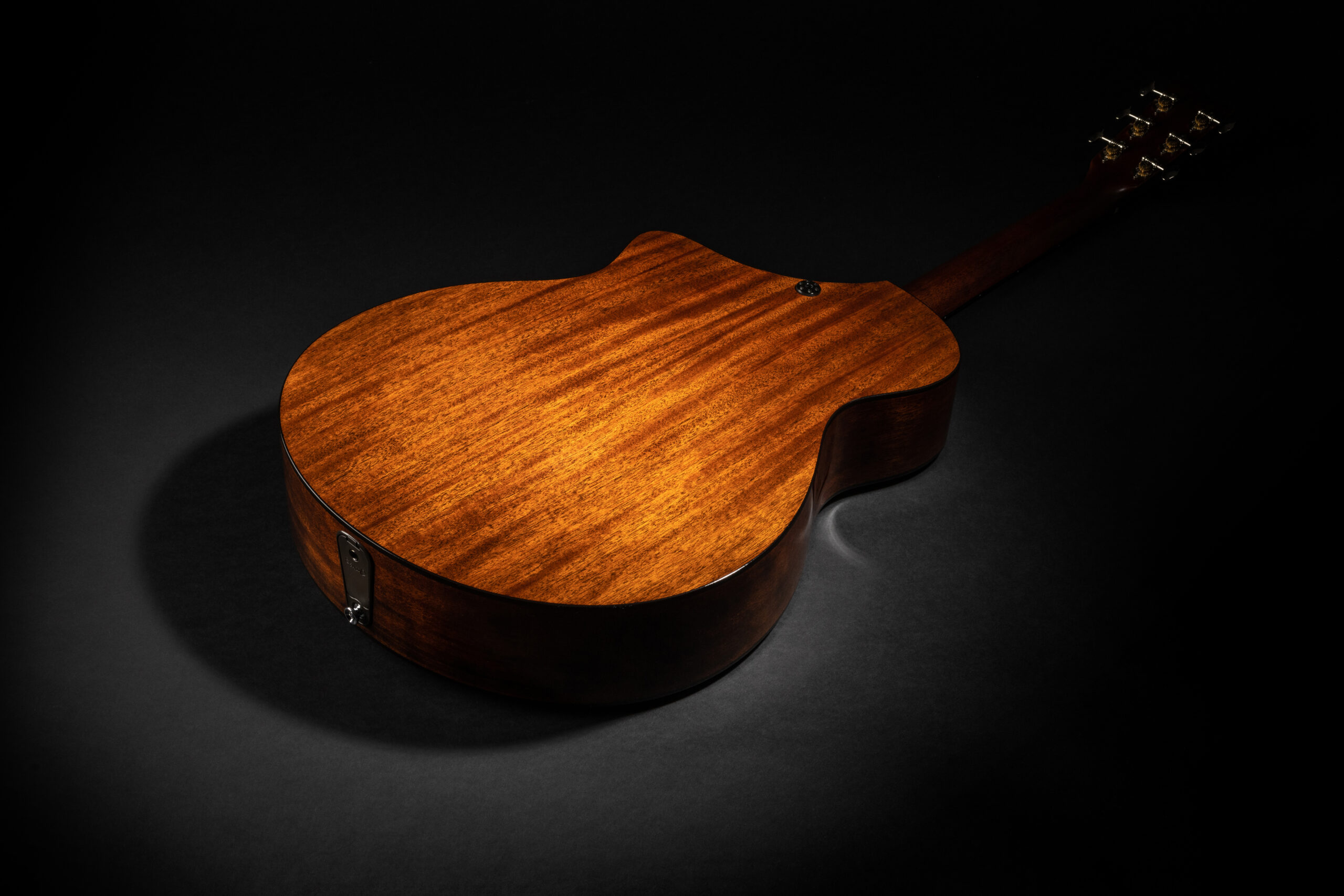 |
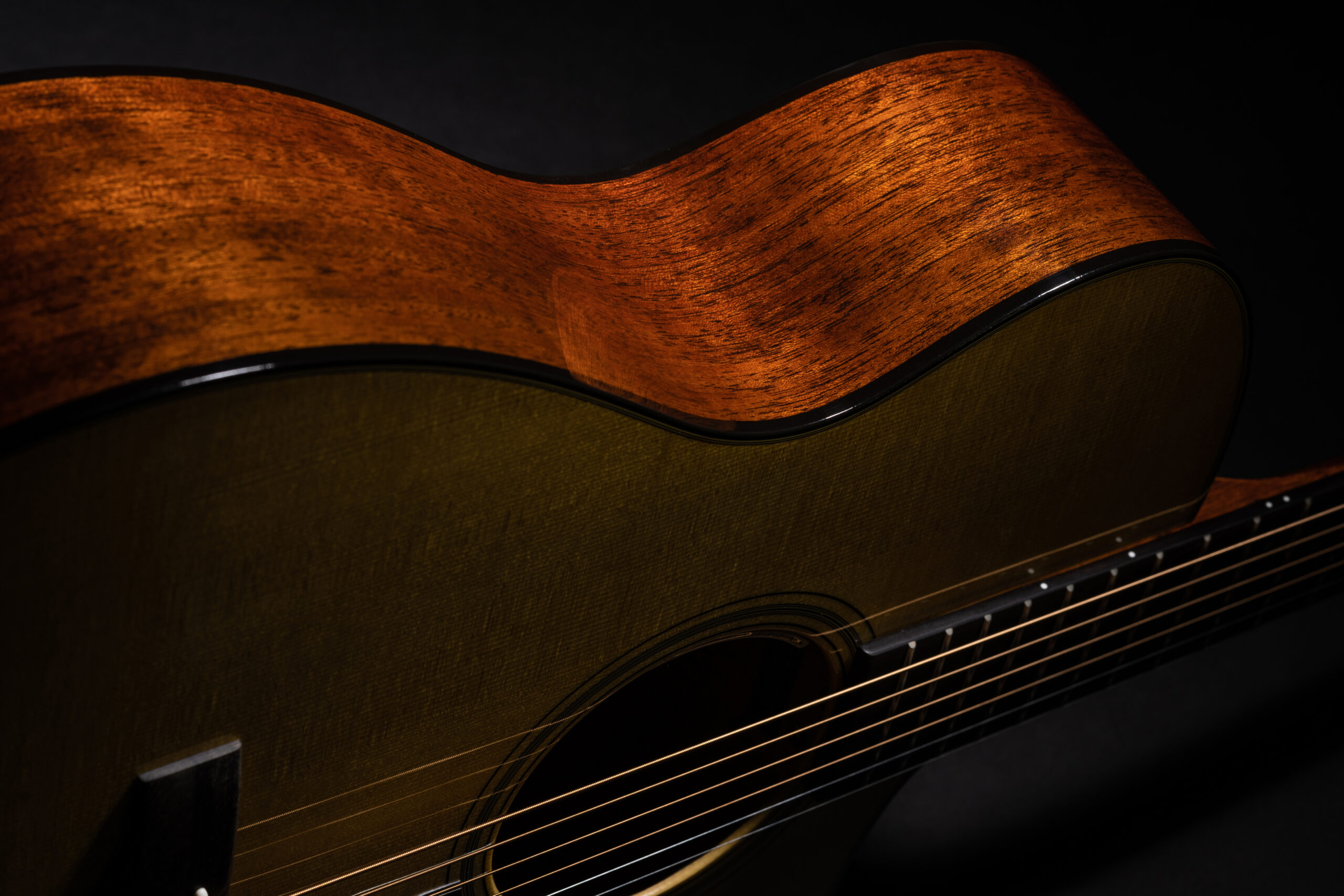 |
The SC-28E’s brassy wound strings and steely trebles are nestled into a cushion of thicker, darker, richer rosewood undertone. Its complex canopy of harmonic overtones is more colorful than heard from the SC-18E, like the other Style 28 Martins when compared to their mahogany counterparts. Various metaphors applied to the rosewood vs. mahogany narrative (moist devil’s food cake vs. banana bread, dark and shadowy cellar vs. nicely lit basement, humid rainforest vs. dry and sunny savannah) hold true here.
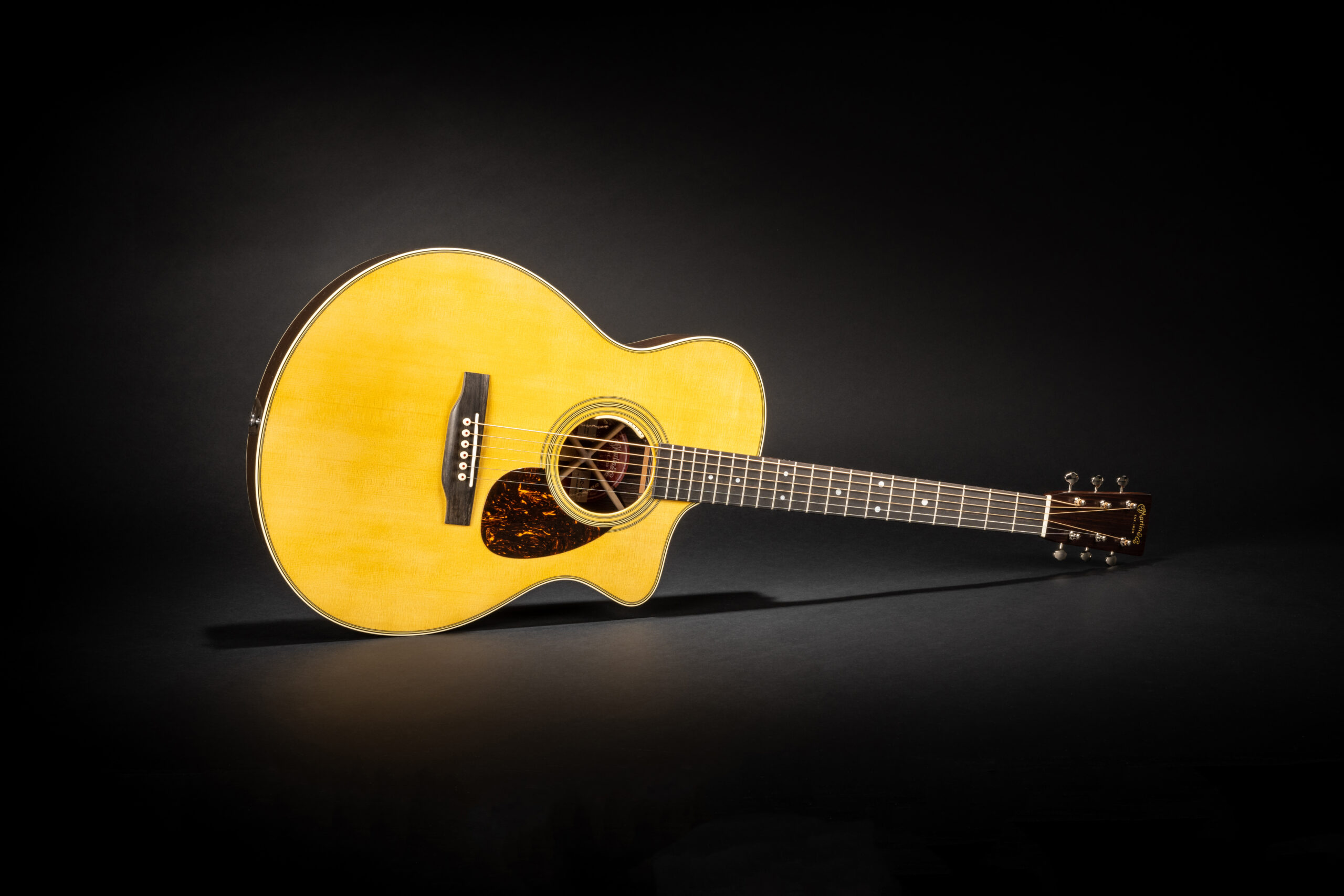 |
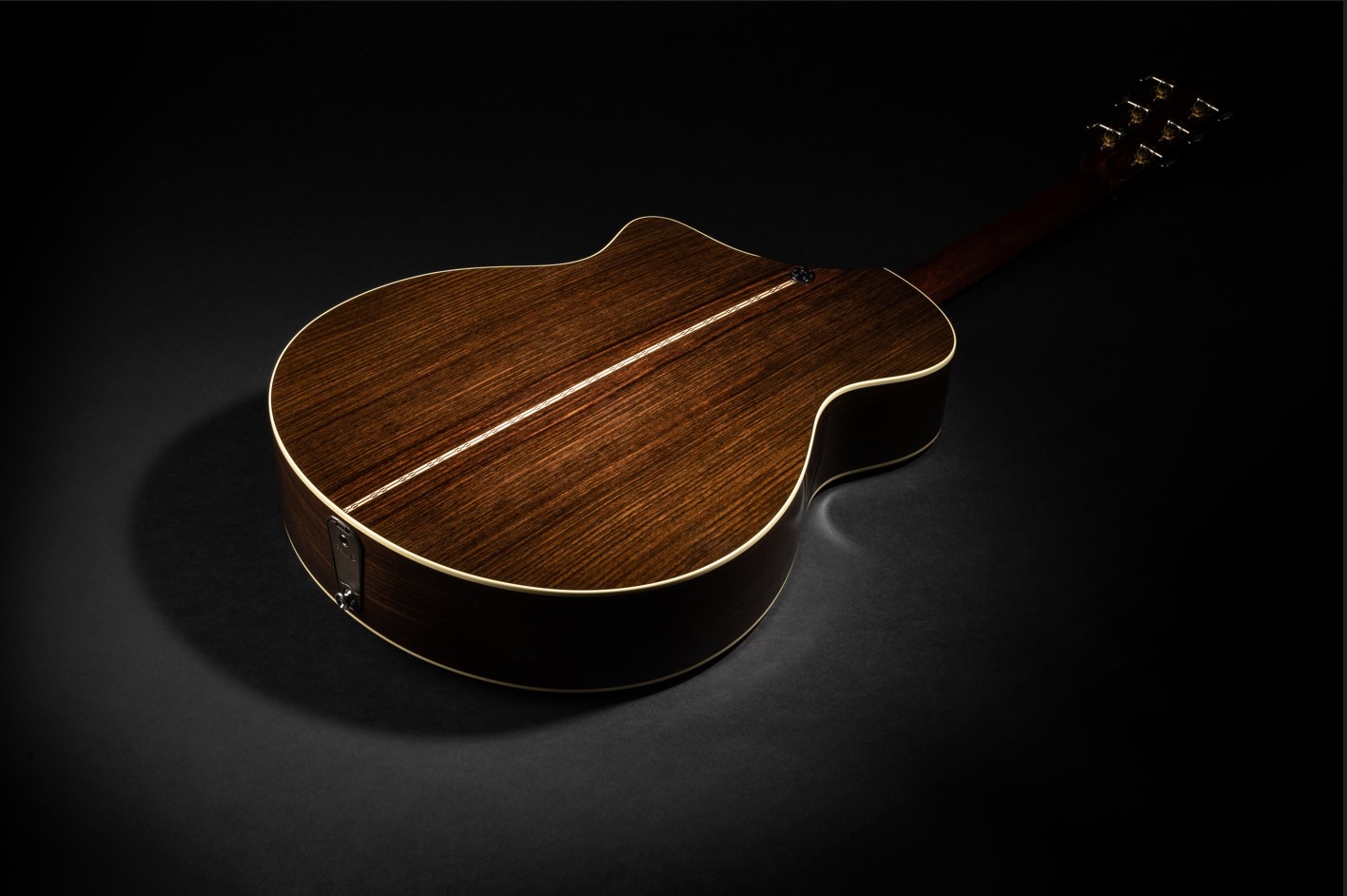 |
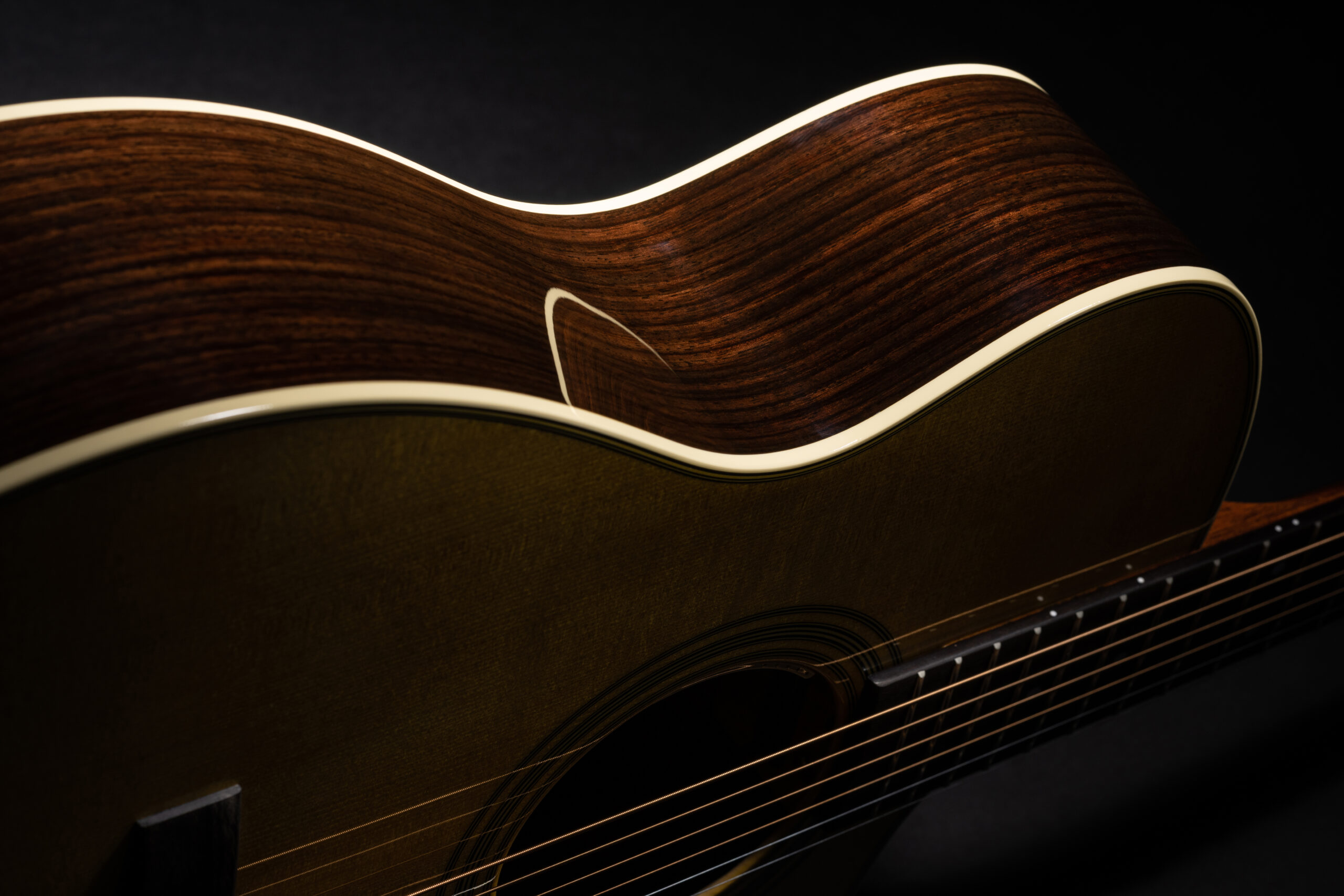 |
Along with all those desirable similarities to other Standard Series Martins, the details in the dynamics, responsiveness, attack ceiling, and bass response of these SCs are unique. This should not be surprising, considering how unique are their body shape and bracing.
To my ear, the acoustic resonance and power production is better than other SC models, but lands somewhere between that of the 14-fret 00 (Grand Concert) or 000 (Auditorium) size Martin, in terms of how much power is returned (or not) when playing hard. So, even though they are long-scale guitars the dynamics are more like short-scale guitars to some extent.
When played with a civilized hand, there is a good deal of volume and projection. The string-to-string balance is exceptionally even, except for the bottom E string, which has enough oomph to the throb that it never gets lost in alternate-bass picking patterns or chords. And that makes these guitars sound more like an M (Grand Auditorium) or GP (Grand Performance) Martin, in this respect.
These models aren’t meant to match a Dreadnought in power or bass wallop, or even have the attack ceiling of an OM or M. But thanks to the super-adjustable neck, a player can have the action set higher and could easily use .13 medium-gauge strings if they so choose. That would certainly beef up the sound in more ways than one. However, volume and bass response output is moot once the guitar is plugged in, since the player can use external EQ settings to enhance the bottom end and make the lightest strumming as loud as they want.
All SC models were aimed at electric guitarists who want an acoustic guitar that will plug into the same amp head or array of effects pedals with a versatility and playability that reaches beyond a typical acoustic guitar. They can also be set up to accommodate extra light and extra-extra light strings for those who want the slinkiness and multi-step bends of a typical electric guitar.
Electric Potential
As for the plugged-in sound, I was able to play the SC-18E with the LR Baggs Anthem through an acoustic guitar amp. It created tone as appealing as many traditional acoustic guitars heard through good pickup and amp. I will have to wait until a local dealer has one in stock that I can run through some electric guitar effects pedals before I can comment further.
As with the earlier SC models, the potential for versatility is off the charts and through the roof. The 13-fret body that provides the string tension and fret spacing of a long-scale neck with the comfort of a short-scale instrument. This is because all the frets are a little closer to the guitarist’s body, and because the bridge is moved farther back on the body, splitting the difference between that found on the modern 14-fret guitar design and a traditional 12-fret guitar design. That bridge position also effects the acoustic and electric tone production for the better.
The Sure Align neck system allows for quick and endless adjustments to action, angle, and even the intonation throughout the life of the guitar. It combines a solid wood neck block, metal neck joint, 4mm two-way truss rod, and insertable shims that fit into a slot below the finger board. A small set screw next to the shim allows for minute adjustments to the intonation, something traditional acoustic guitar neck joints cannot accommodate.
Comfortable Playability
The Sure Align neck is why no heel is needed where the neck connects to the body, allowing unprecedented access to the upper frets on an acoustic guitar. And because of the long 25.4″ string scale, those frets are spread out enough even in the cutaway area, alleviating finger traffic jams in the uppermost frets. Better yet, a player can form barre chords with perfect positioning beyond the 12th fret and play jazz chords in the cutaway without being a contortionist.
Look Ma, No Heel!!!
The ergonomic High Velocity neck profile is sleek and fast, with a helical twist to the barrel that is so subtle most people would never know it’s there. But they will notice how it seems to fit perfectly in the hand at every position along the fingerboard, which is as thin of as those found on prewar Martins, further reducing the girth the fretting hand must reach around.
There is a bit more mass to the neck profile on the treble side down by the nut, so the fingers do not feel cramped, and the thumb has an easier time reaching over to mute or fret the bass strings. But as the hand moves toward the body, that ratio flips, so there is more meat for the thumb to grasp behind the bass strings and less mass in the slope behind the treble strings, allowing effortless lead guitar runs and string bends during solos.
I find the necks on all the S models to be so ergonomically comfortable to play I would recommend them to elderly guitarists by virtue of the neck profile alone. The same goes for anyone who has suffered injuries to their fretting hand and must worry about repetitive stress.
The S body shape was named by Fred Greene, Vice President of Product Management, who kept sketching body shapes with a strong S feel to them. He wanted Martin to make a guitar with an asymmetrical body and ergonomics in mind, which led directly to these new Standard Series models.
The waist is tilted so it leans forward on the bass side and back toward the lower bout on the treble side. This means there is more cubic space in the sound chamber on the treble side of the lower bout, so less of the sound chamber is removed when accounting for the cutaway in the upper bout.
The body is very comfortable in the lap and having the neck attach at the 13th fret allows it to be extraordinarily balanced when hanging from a guitar strap while playing standing up. These guitars are a little heavier than the Road Series version, due to the density of the solid back and sides, but the neck won’t leap skyward the moment one lets go like a traditional acoustic guitar.
But the 13-fret asymmetrical body also required a unique bracing pattern to work with the asymmetrical shape of the soundboard. And that required a lot of research and development.
The answer was found in scalloping the bracing on the treble side of the X brace, but only using a taper on the shorter braces under the bass side. Martin also developed the internal “recurve,” so a portion of the soundboard is thinner, which helps increase low frequency resonance without requiring a heavy-handed strum.
Responsive Dynamics
About the only thing Martin traditionalists have to criticize about these new Standard Series models (apart from how they look different and feel different from what they are used to, and have a metal neck joint, no neck heel to get in the way of rockin’ leads, a convenient strap button on the bass side of a super-sleek neck that starts the cutaway at the 13th fret – or even have a cutaway for that matter…) is that they do not respond to heavy handed playing with the same sort of power, bark, and roar of traditional Martins, even those of similar body sizes.
The irony of this lies in how the acoustic dynamic response of these ultramodern instruments is similar to pre-war OMs or 000s. Once I relaxed and laid off the attack when strumming, I found that tone zone where the guitar produces optimum resonance. Again, that is exactly the same thing I say about great vintage guitars, which can be over-driven easily but can sound magnificent when played like they want to be played.
With light gauge strings and the default setup, they can be played like other acoustic guitars, they just do not respond with same kind of vocal power production when over-driven. When I strummed or picked with a light to medium attack, I was surprised at how easily the tone came out into the room. I kept being surprised.
I was surprised by these acoustic-electric hybrids, in how a chord strummed on the SC-28E sounds more like a 000-28 or OM-28 than it didn’t, only with that slightly more-pronounced bottom E string. But I was most pleasantly surprised by the classic Martin undertone presence in the low-mids of the SC-18E and the acoustic tone during fingerstyle picking patterns and playing lead accompaniment to another person’s strumming and singing, both when acoustic and amplified.
I was particularly surprised at how full and pronounced the bass is from both guitars when I listened to the recordings I made for my review videos. That patented asymmetrical partial soundboard recurve was obviously a success. I first played an SC-28E prototype some years ago. It was too long a time to be able to comment on how different it played and sounded from production model, other than to say they have figured out the amplified feedback problem.
I have been a fan of the SC models in the Road Series and the price of the SC-10E makes it mighty tempting to try out and see if I would want to use it on stage. But I definitely like these new Standard Series SC-28E and SC-18E a great deal, even more than I expected.
One person who did acquire one to try out is Belgian fingerstyle maestro Jacques Stotzem, who is now performing with the SC-28E and it may end up replacing his rosewood OMC Martin signature model he has been playing since 2008.
(photo: Jacques Stotzem)
And that is one man’s word on…
The Martin SC-28E / SC-18E
Price: $3,999.00 / $3,599.00
Official Spec Sheets
Additional Reading
Martin Cherry Hill Customs – quietly for sale only at the Martin Factory
Martin GPCE Inception Review – Skeletonized bracing wonder

